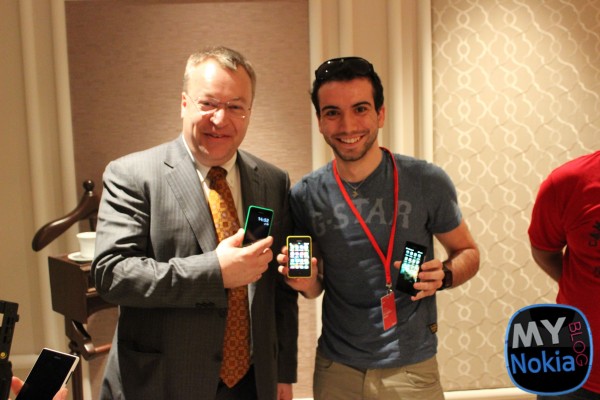Q&A with Stephen Elop on the Asha 501
Myself and a select few bloggers were invited to an intimate Q&A session with Stephen Elop, thanks to Nokia Conversations. We weren’t allowed to record the session, however I took a few notes (but missed a few key points too sadly).
Note: Nothing is verbatim.
Q: Why did Nokia go with a capacitive screen on such a “cheap” phone?
A: It is about bringing high-end experiences to more people. On the Asha 501, capacitive screen is used to give a better experience. Several elements were considered and tweaked on a hardware and software level to ensure that there was no performance loss.
Q: What differentiates the Asha 501 from cheap Androids? Does it have multitasking?
A: The OS that the Asha 501 runs on is not a high-end OS. It was not designed to run on high-end devices, then the OS was reduced to a stage where it could “run” on the hardware. The key is the experience, and the Asha 501 delivers a experience tailored to it’s target market, its hardware and price point.
Multitasking is supported on the Asha 501, in the sense that several tasks, such as Twitter notifications, updating Fastlane etc., can occur in the background. The main focus of the Asha 501 is visual multitasking. This is shown in Fastlane where you have access to your most recent apps, as well as control some of your favourites. Just swipe away and it is now in the Fastlane.
Q (Mine): If the Nokia Asha 501 is said to ease the transition, or blur the line, from feature phones, to smart phones, won’t the users who have an Asha 501 who then upgrade to a Nokia Lumia find the experience entirely different? For this sort of an approach, wouldn’t it have made sense to keep the N9, to allow that transition to be more effective.
A: Nokia’s aim in bringing the Asha 501 to market was a consistent services experience across all the devices, as well as bring some of the “Nokia” qualities to the lower price point. For example, the design language, in terms of software coming from the N9, and the physical design inspired by the evolution later seen in the Lumia range.
The Asha 501 is clearly designed for a different market to the Lumia devices, and as such, the elements that are included in the device reflect the needs of the target audience. Durability, something that pretty much every Nokia device is known for, is also a major factor. Finally, imaging. Nokia has been working hard on imaging, and they believe at it’s price point, the Asha 501 has a 3.2mp great camera.
We also get the question, “why not just make Lumia devices cheaper?”, the answer is simple. We designed the Nokia Asha 501 to provide a great experience on low hardware at an incredibly low price. Lumia is Nokia’s future. If it were to bring that experience to low-end devices, like you see on low-end Android, the experience is terrible, and it ruins the integrity of a brand – which is the last thing Nokia want.
Elop did not mention this comment, but I liked it a lot, that I feel it best to be included here.
The Asha 501 provides the same basic experience as the Lumia range in essence. You have a homescreen, that gives you a list of all the apps you have installed. With a simple swipe, you now have a list of updates, varying from app information to notifications and calendar entries. On the Asha, this is achieved by fast lane, on the Lumia, this is Live Tiles. Same basic concept, just presented in a different way.
Q: How big of a role did the Smarterphone acquisition play in terms of the refresh of Asha?
A: Smarterphone was essential! The whole platform was designed with the goal to bring high-end experiences to lower price points and hardware. The acquisition of Smarterphone provided a framework for that. It allowed Nokia to “recycle” the concepts and elements first seen in the N9, and bring them back to market in a way that would run and run efficiently. The Asha 501 is so efficient, it can run for 48days on standby!
Q: Why did you choose a fixed focus camera?
A: Many people who purchase devices at that price point aren’t too fussy about the camera on their phone. As such, the choice was made to include a fixed-focus camera as apposed to auto-focus in an attempt to balance the quality of the experience, and the price point.
Stephen concluded the Q&A stating that the Asha 501 is just the beginning of a new range of next generation Asha devices.
By being seated next to Stephen, I managed to score myself a picture with him 😀
Category: Asha







Connect
Connect with us on the following social media platforms.